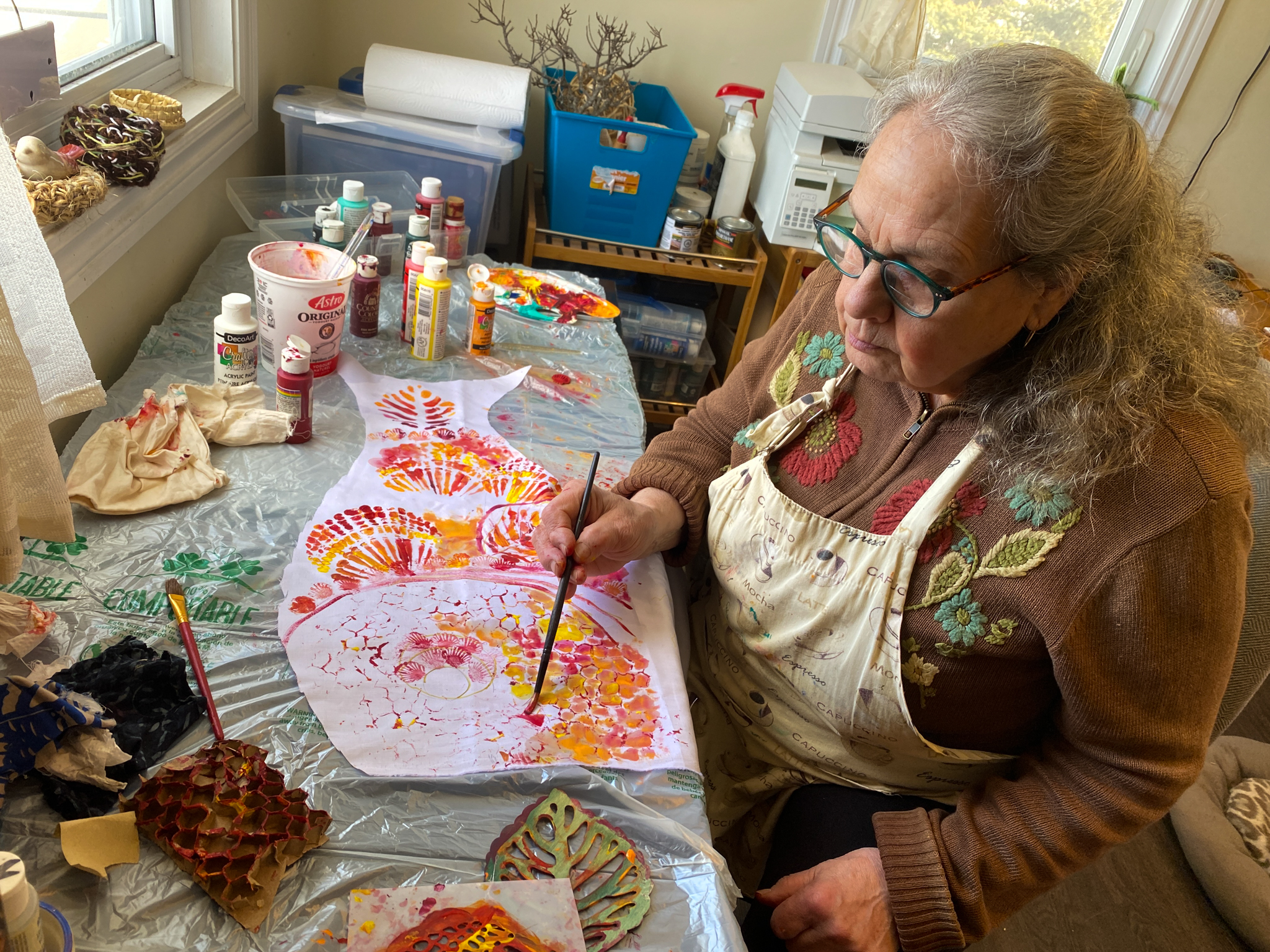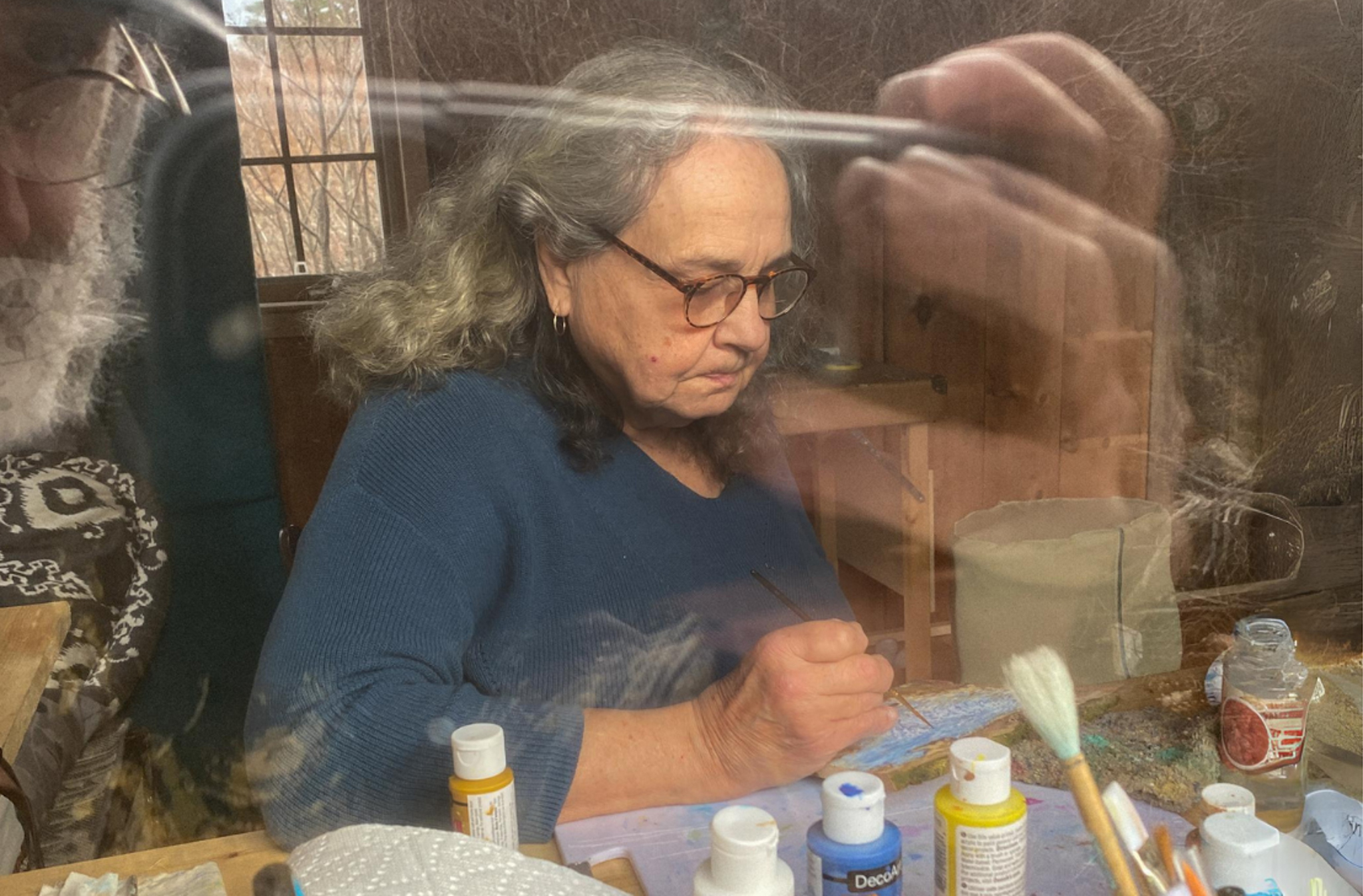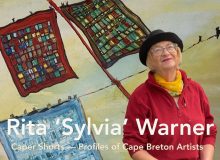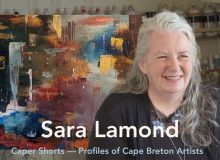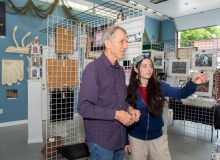Elaine Mandrona: The urgent need to make art every day
Since retiring from massage therapy, Elaine Mandrona has felt the need to make art every day.
It’s hard keeping up with what multi-media artist Elaine Mandrona is up to on any given day. She could be doing a watercolour of a scene out one of the windows of her new workspace or modeling clay around a piece of driftwood into a moose. Or she could be painting turtles or tortoises on wooden bowls found at thrift stores or she could be printing redfish — a recovering species in the area — with a stamp she’s made from fun foam. She could even be making goddesses from stones, shells and bayberry twigs.
And this is only a partial list. “Since I’ve retired all I want to do is make things,” she says. “I think I’ve always been an artist. I’ve always loved to draw. And whenever I feel something or have an idea, I want to make art out of it.”
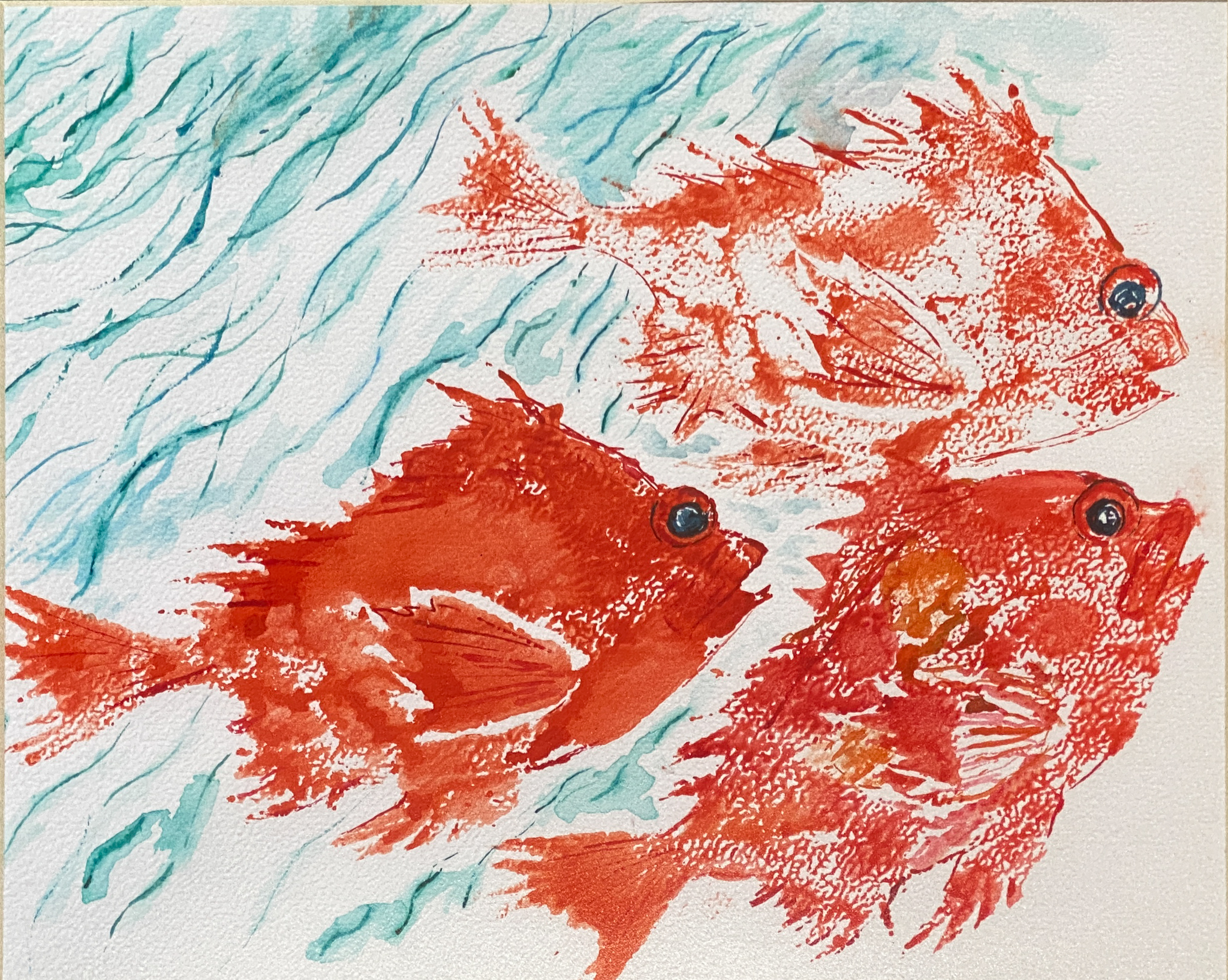
In her art, reverence and fascination for the life energy and boundless variety of colour in the natural world dominate her work. Whether she’s painting one of the countless coves around the Isle Madame archipelago of islands where she lives or the bushes outside her studio window she is always in peril of being overwhelmed by this energy and colour. This is especially true when she is working on wood, either boards sawn from logs from the wood pile or bowls and plates bought from thrift stores, the wood’s energy, its grain compounds her artistic experience. It gives a lot of her work the feel of the immediacy of impressionism bordering on abstract. Stopping is always her biggest challenge, stopping before all that life energy and colour overwhelm the work.
The obsession with Nature
Her art is an integral part of the intimate relationship she has with Nature. Nature without humans, that is. Only on the rarest occasions does she include people in her art, rarely even photographs them, except her grandson. She says, “I grew up in an urban environment chock full of noisy, contentious, in-your-face people.” Elaine grew up in Stratford, Connecticut, about 100 kilometres northeast but embedded in the sprawl of New York City. “As a child I always sought out the vacant lots, fields and neighbourhood brook as a delightful reprieve to the crush of human energy. I guess I’m an introvert and now as an adult painter I find that Nature and solitude is what gives me tranquility.” She moved to New Brunswick in the 70s and became a back-to-the-lander, eventually settling deep in the woods and hills in the Cedar Camp area near Sussex.
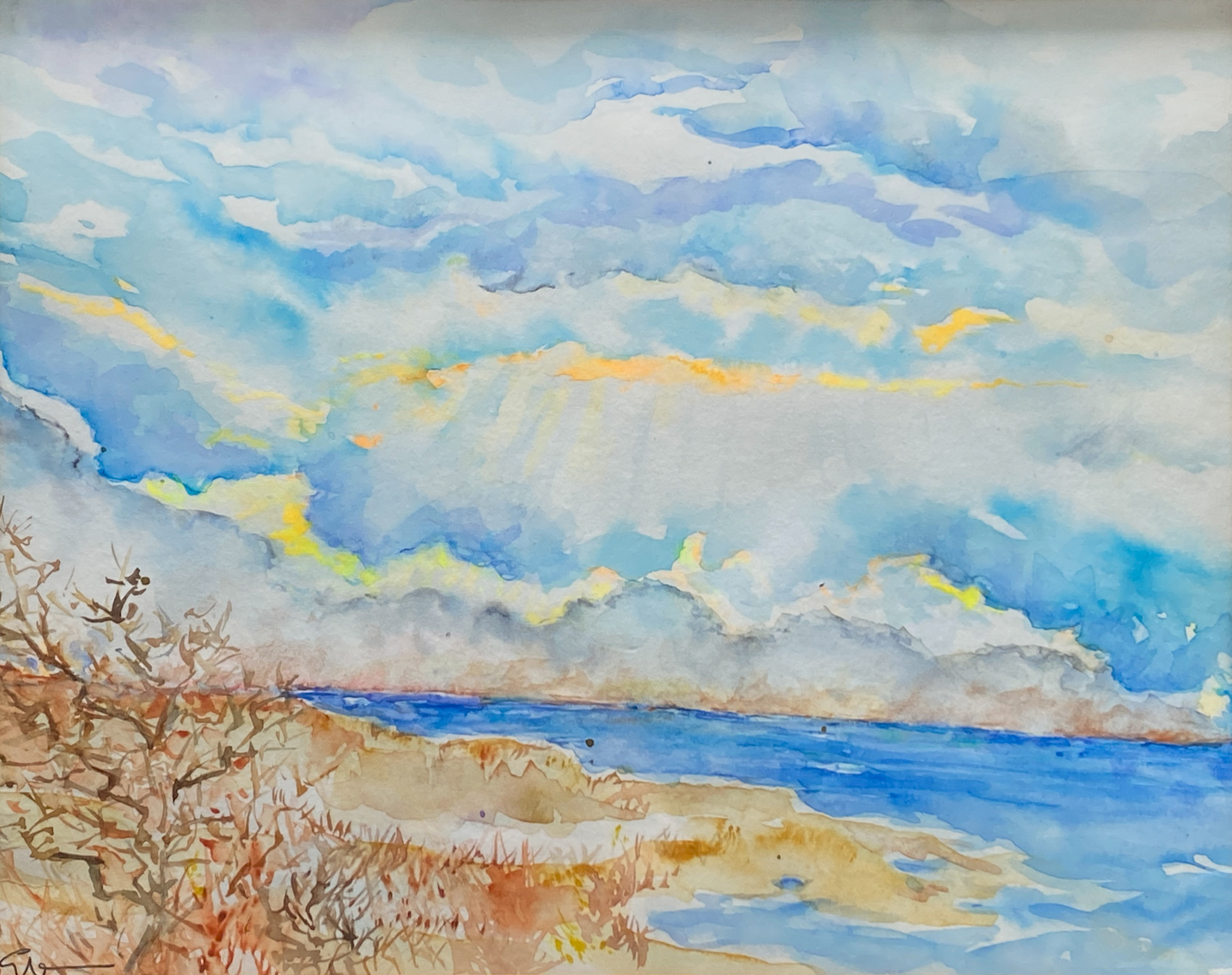
That need to be near Nature is still with her although the terrain has changed dramatically. Upon retiring she moved —we moved— to Petit-de-grat off the Southeastern end of Cape Breton where wind, water, beaches and scrubby, weatherbeaten trees are the daily experience. She says, “We moved here because it’s so beautiful. And all the water and the landscape itself is very nourishing for the visuals. For the eyes. I don’t even have to go anywhere to see things that are beautiful and inspiring. I can just look out the window. ”
But this love for the natural world around her goes further. “I learn all about the environment, you know, the things that I’m painting. It’s not just that ‘Oh, that’s pretty I’m going to paint it’. I want to learn all about it. And if someone likes the painting, then I’ll tell them what I’ve learned. So in a way it’s helping people learn more about the natural environment around me.” This is evident in the birds like her Cormorant Drying Its Wings, an acrylic on wood. It’s not just a depiction of a common scene around the islands, it’s a study of the bird and its behaviour and place in Nature. Its habit of either fishing on the water or resting on rocks inaccessible to the shore. Her cormorant is surrounded by the blue of sky and water.
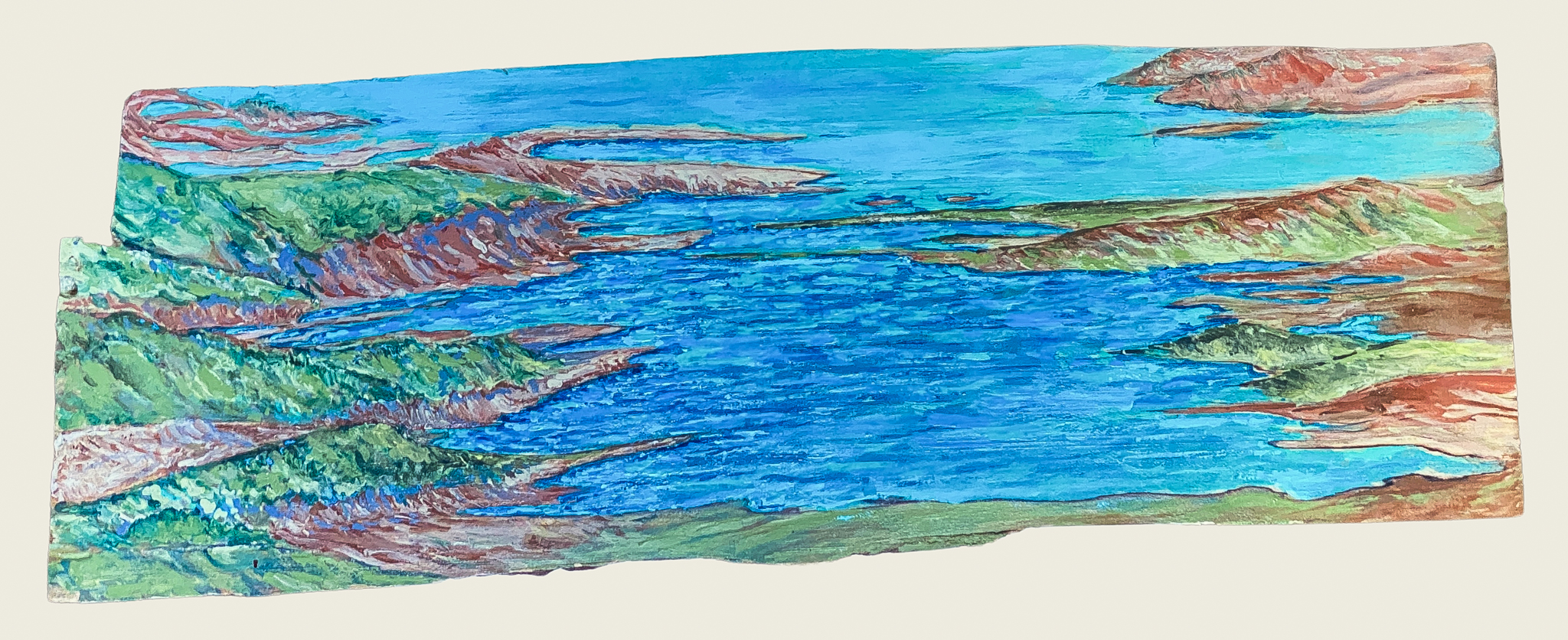
Seascapes of Island Life
All her life she has valued new landscapes, new vistas. Now she lives on Petit-de-grat Island and it’s the seascapes around it that feed her vision. But how is an island different? “It’s very self-contained. We have everything we need here. I do like going over the causeway at Canso to the mainland and I like going to Sydney or up toward the park. But we could stay here for weeks and never get bored.”
Almost all her art these days includes the ocean, that huge reminder that Nature is in charge and we are only a small part of it. Like Sunset in Petit Anse, another acrylic on wood depicting the alway treacherous looking rocks jutting out of the heavy swells, a reminder that this is not a placid lake. It’s the real deal.
Her watercolours are filled with saltwater too, like (her latest watercolour) where only a small triangle is water. What gives it away as oceanside is the scrubbiness of the vegetation, a lone struggling spruce in the middle that attests to the struggle to grow against relentless wind and salt spray. I think she respects that scrawny tree more than many forests.
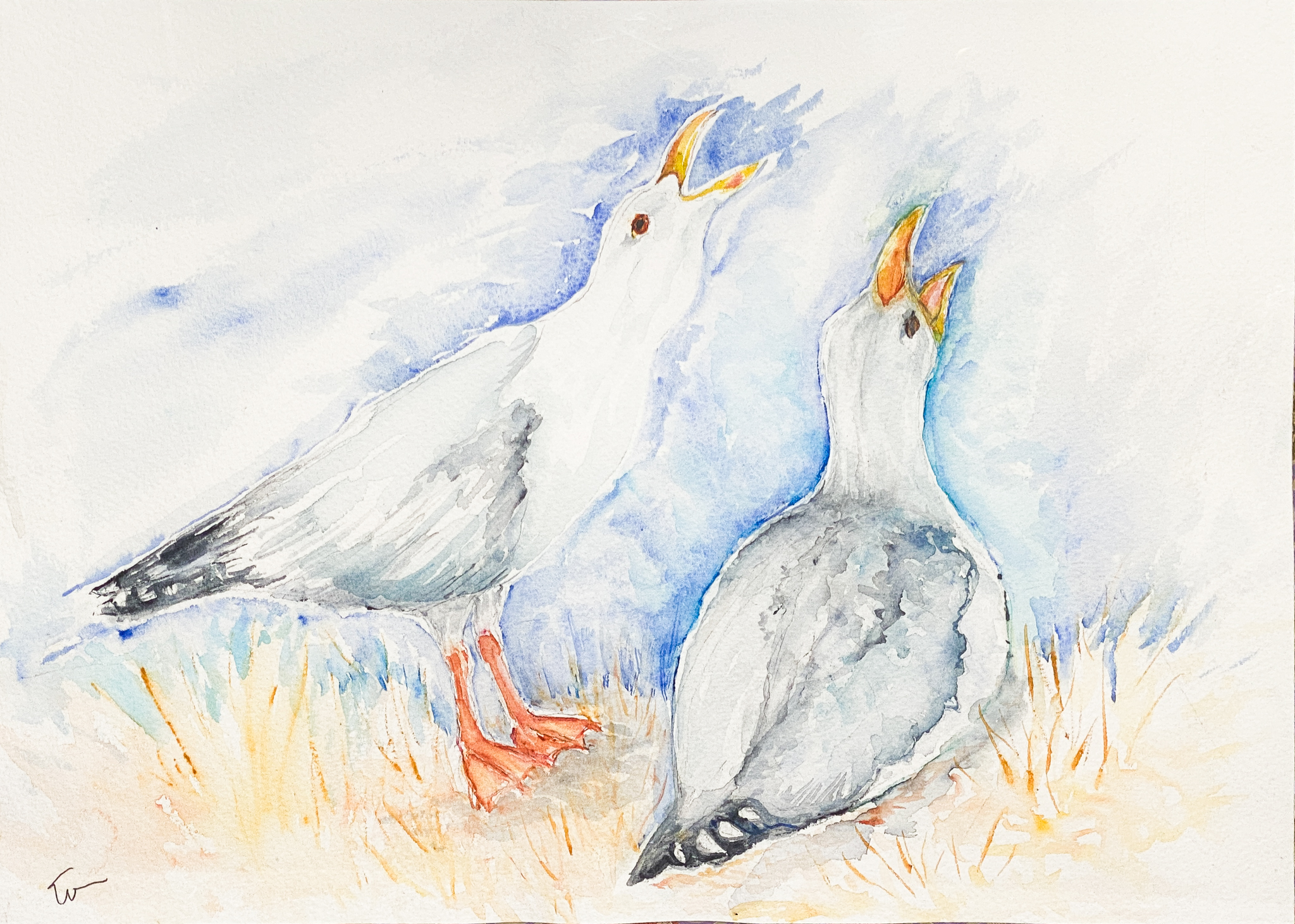
The Birds
But some of her most delightful work is with birds. She is always delighted by birds. She recognizes their songs and is always researching them. Even the ubiquitous seagull. She says of her Raucous Mating Pair. “I decided I wanted to paint more of the local birds,” she says. “This is a mating pair that we’ve noticed pairing up in the spring. And they’ve been around like every day and they must have a nest nearby. And they were both doing their raucous call with their beaks wide open. I really liked it. And I like the fact that they’re a pair and they’re an amazing pair.”
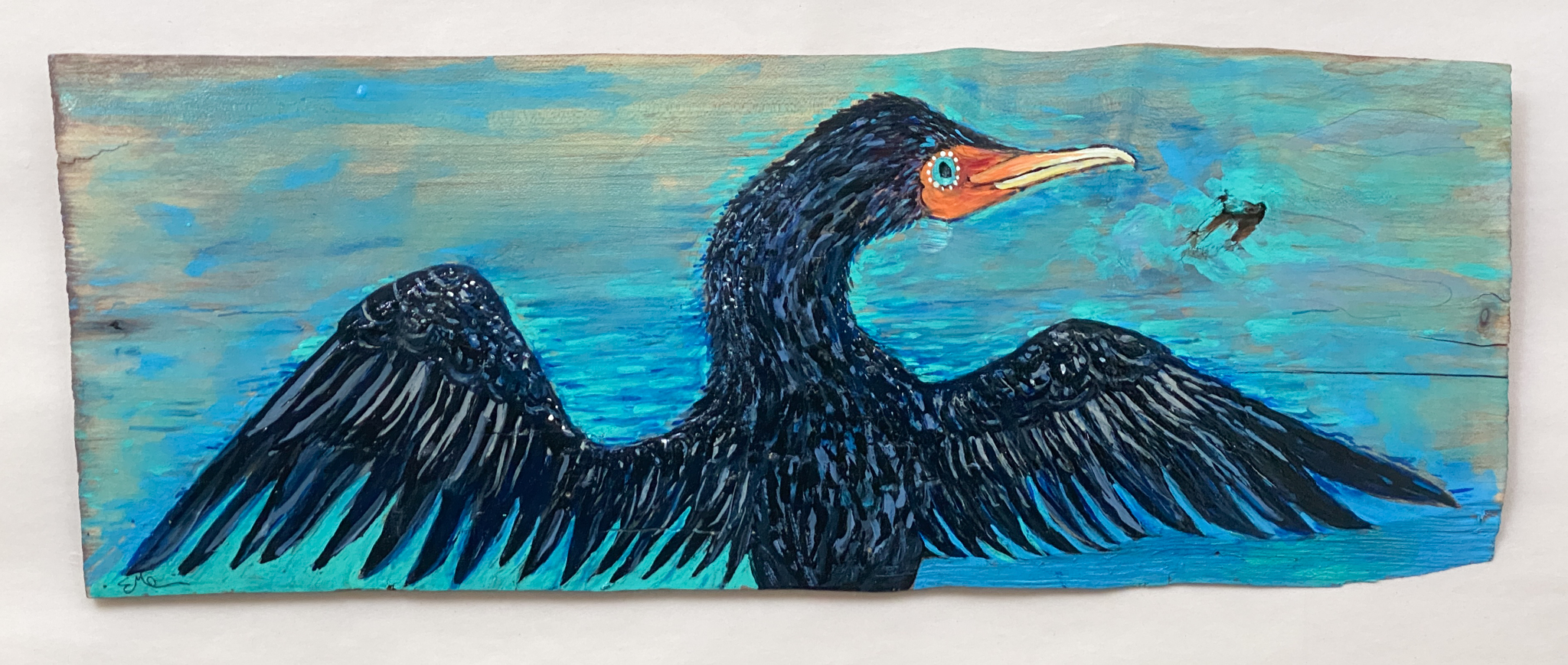
Each piece of art, influenced by Cape Breton’s flora and fauna, enhances her sense of belonging in this place. She says, “ When I first arrive in a new environment either as a visitor or to settle, the first thing that I find myself doing almost unconsciously is checking out what species of animals and plants live in the area. I need to know what other living things I share my environment with before I can feel a part of it.”
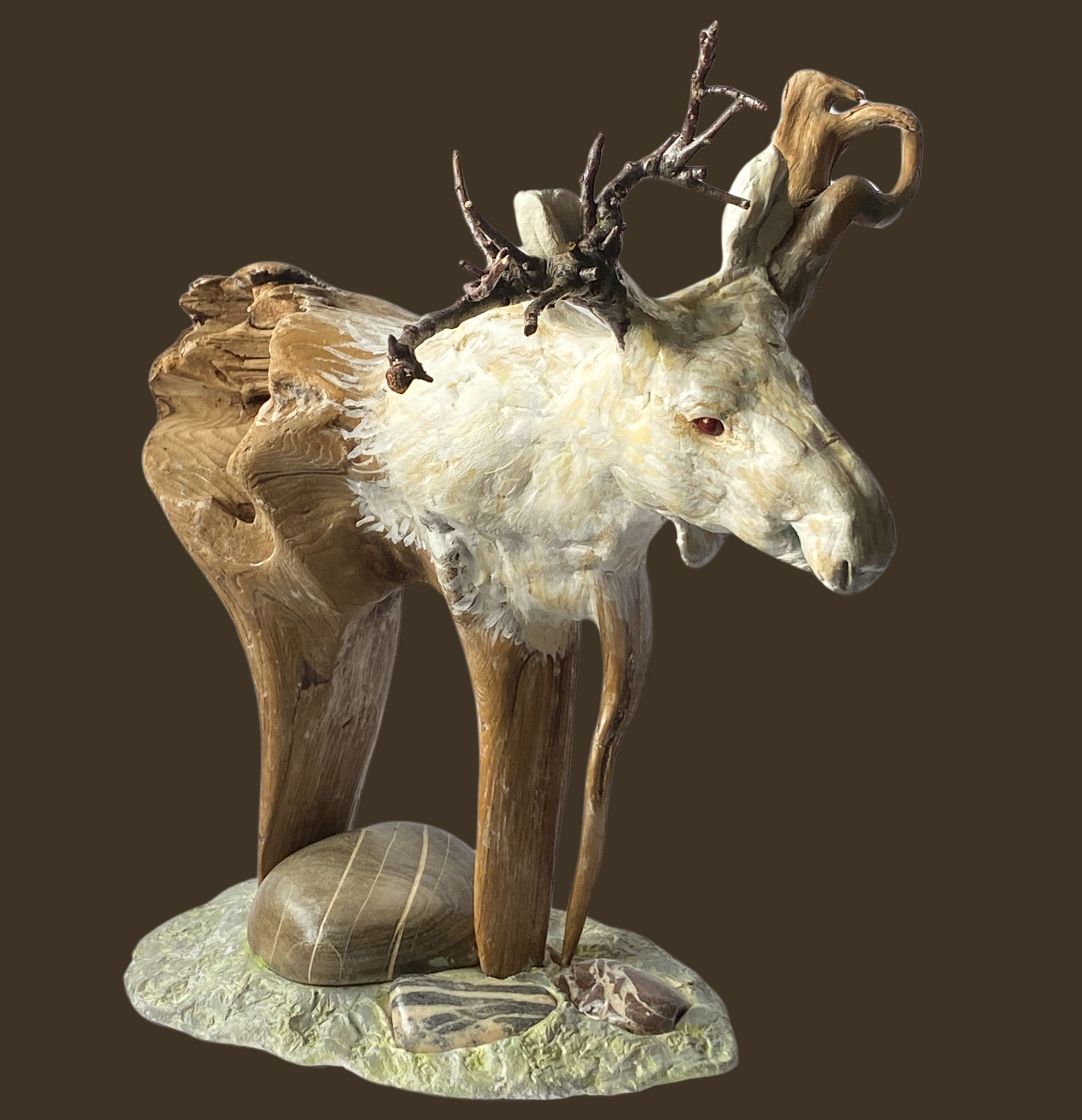
The point of being a multimedia artist
Elaine works in a wide range of media: watercolor, acrylic, pencil crayon, pastel, paper, wood, fabric. “I like going back and forth between different media because one informs the other, like it sort of builds,” she says. “If I get stuck in one, I’ll just turn to the other. I find modeling things with my hands and feeling the shape of it — like a bird or something — and feel the weight of it, it’s a kinesthetic experience. I don’t know exactly how but when I go to paint a bird, it translates into knowing more about the subject in a felt sense. It’s not flat. It has dimension. It has weight. It allows me to look at things in a more detailed way. Anything you put in your brain can come out in your art and that’s good.”

So, how does that play out when you mix things like clay with a chunk of found driftwood? Like her white moose. “You take the wood and see what it suggests or what it says to you. So, the piece of driftwood that I just made into a moose, it looked like it had a back but it was kind of broken open, and it looked like it had three legs. And then there was a piece that came off the side that was all nubby and gnarled, it was an antler to me. So I just filled in the rest with clay and made a moose.” Could it have been something else? “No. That was all I saw, the moose.”
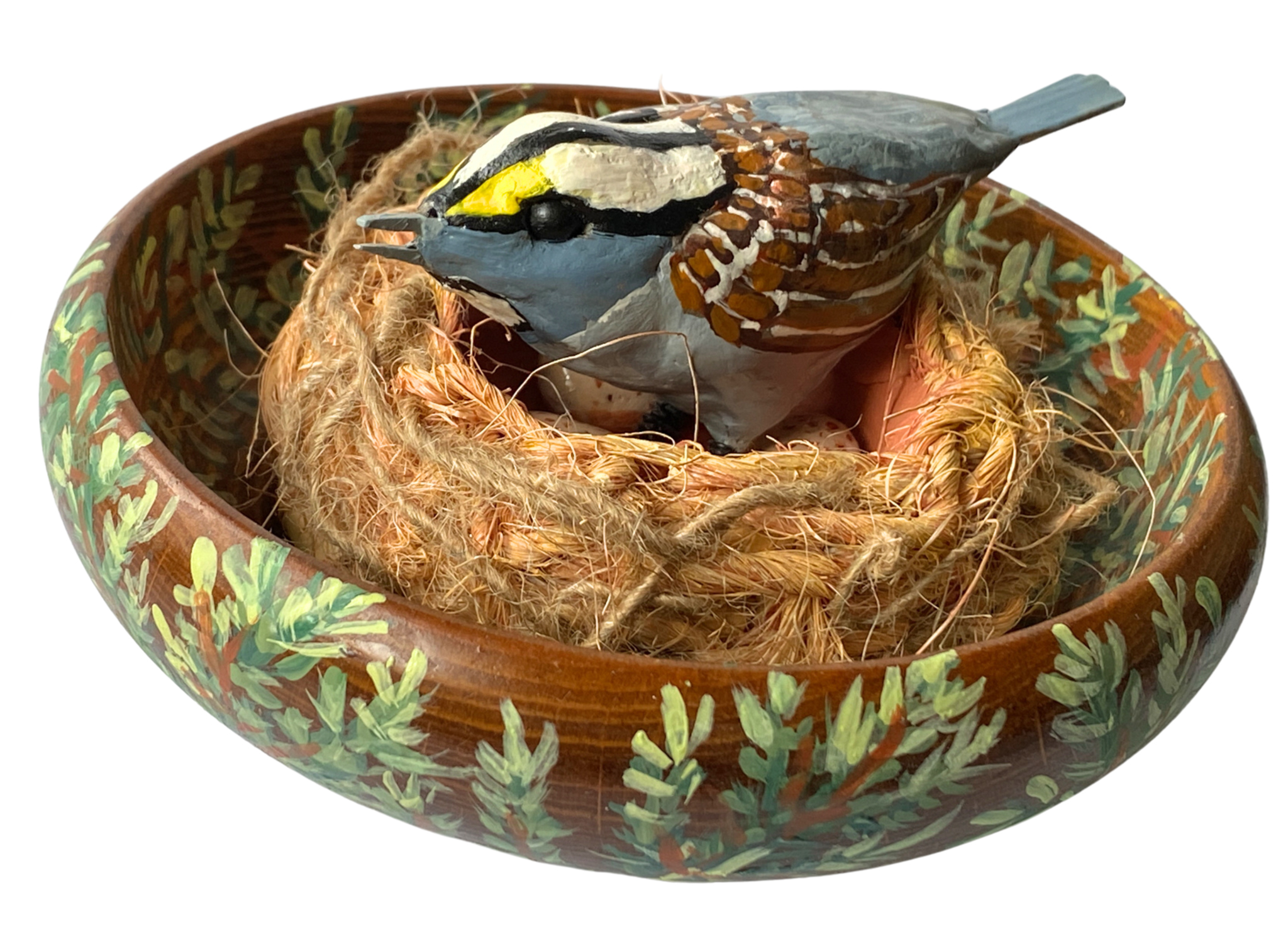
Art Every Day
Her relentless exploration of materials and new landscapes, her looking for potential and pattern in stones, flotsam and fabric, her compassion for the natural world around her, all fuel the urgency she has to make things, to make art every day. But she feels she’s lost a lot of time.
She did well at art in school, won prizes as a child, even sold some pieces in high school but got side-tracked in university. “In university, I should have studied art. Like, that was the first wrong turn.” In the days when you lined up for art courses, they were always full before she got there. “I didn’t have enough information or advice, I guess. No mentors.”
Then life and the need to make a living got in the way. She did start making stained glass windows and ornaments, and even owned one gift shop called Break Even Glass followed by another called Glass Alley Crafts and gifts. Both were in Sussex, New Brunswick. However, she hesitates to call it art. “I was in production mode to make a living, so I never really concentrated on it as an art.”
She eventually felt called to the healing arts. “I spent many years (28) as a massage therapist, and that was my identity, a therapist and a healer. That’s left behind, now I can’t do that physically anymore. But I guess I see art as a form of healing.” It’s a healing of the spirit. She says when one makes art they have to confront self-doubt which is a form of suffering. “It’s always a matter of putting that (the doubts) in perspective and working through until I’m less afraid to make mistakes or waste materials or any of that.”
But she is working through “all of that.” She’s doing art every day. “Now that I’m retired and don’t have other distractions,” she says, “I can dedicate myself to just making art and learning and I’m kind of surprised as to how much I have to learn.”
When she’s not making art she’s tackling the daunting task of selling it or writing about it or trying to network with other artists in the area so they can share experiences, maybe even build community and help each other forward. It’s all in the right direction. But it’s all art and it’s exactly where she wants to be.
“Before I retired,” she says, “I didn’t always look forward to my days and had more stress. Now I’m excited when I get up in the morning and can’t wait to try out my creative ideas.”
